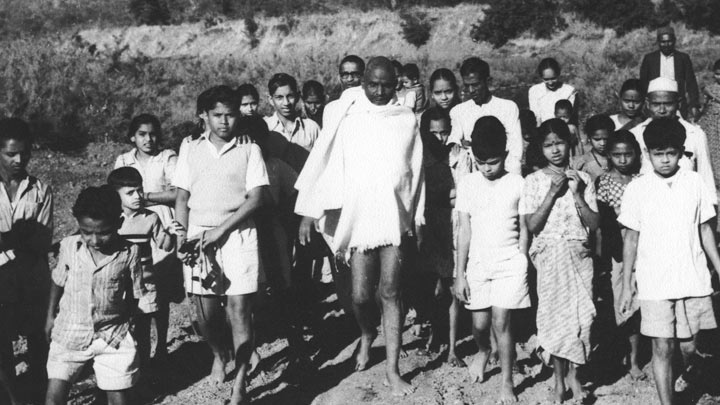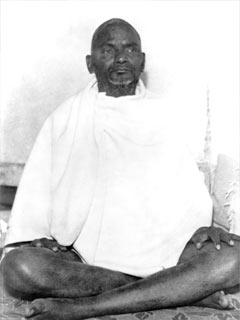
Bhagavan Nityananda originated from Kerala, in South India. One of India’s great saints of the last century, he became a wandering yogi early in life. He spent many years living in remote forest areas and was known for his austerities. After settling down, he built an ashram in Kanhangad, Kerala in the 1920s, and another in the village of Ganeshpuri, Maharashtra in 1936.
Considered to be an avadhut (a person born in a state of enlightenment), he displayed great detachment and rarely spoke. However, during Bhagavan’s lifetime, thousands flocked to him just to be in his presence and seek his blessing.
“The Heart is the hub of all sacred places. Go there and roam.” – Bhagavan Nityananda
 While still in Kerala, he came briefly in contact with the young man who was to become Swami Muktananda, and inspired him to set off on his own spiritual quest.
While still in Kerala, he came briefly in contact with the young man who was to become Swami Muktananda, and inspired him to set off on his own spiritual quest.
Many years later, after wandering India and seeking spiritual fulfilment, Swami Muktananda once again encountered Bhagavan Nityananda, this time in Ganeshpuri. He received a powerful initiation from him, and subsequently underwent nine years of intense meditation practice, which culminated when Bhagavan Nityananda proclaimed, Muktananda has become enlightened, he is liberated.
Prior to his own passing in 1961, Bhagavan Nityananda encouraged his disciple to live nearby, and predicted Swami Muktananda’s spiritual accomplishment and influence would have a far-reaching effect.
Throughout his time as a world teacher, Swami Muktananada remained profoundly devoted to his Guru. Bhagavan Nityananda was always placed at the forefront of devotional practices in Swami Muktananda’s ashrams, and this remains the case today in Swami Nityananda’s ashrams.


